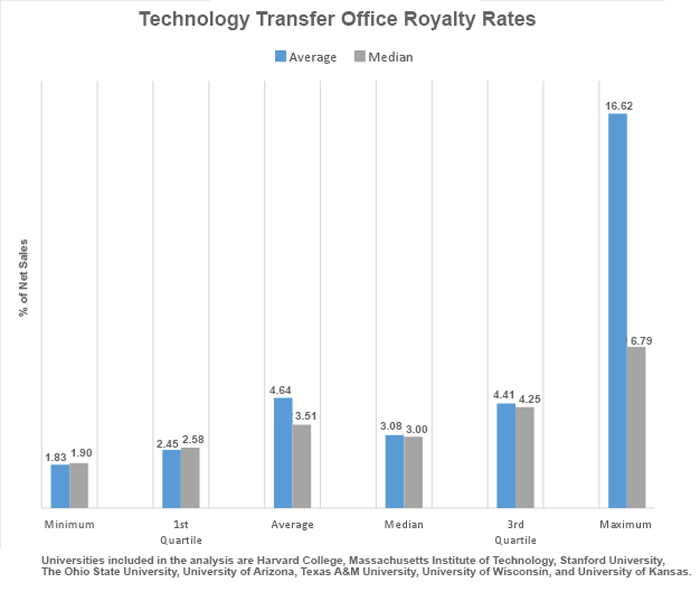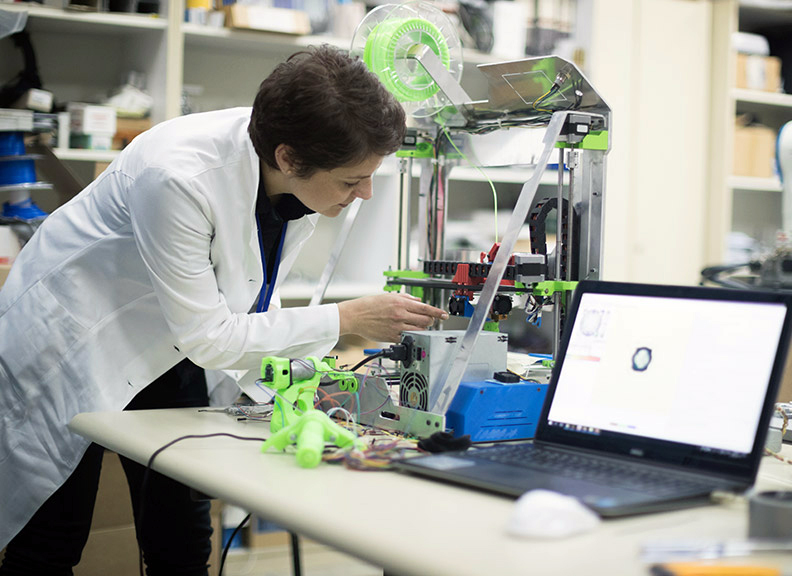In the world of academia, technological advancement is not made solely for the pursuit of knowledge. Many universities strive to further develop and commercialize their intellectual property through the process of technology transfer. To further this end, technology transfer offices (TTOs) at universities investigate how best to bring their IP into the public marketplace. TTOs work to identify new and potentially marketable technologies developed by their respective university researchers, professors, and students by securing patents and copyrights to protect this IP, and negotiate strategies to commercialize their innovations. According to the Association of University Technology Managers (AUTM), from 1996 to 2015, TTOs have been responsible for contributing $1.3 trillion to U.S. Gross Industrial Output and $591 billion to U.S. Gross Domestic Product.
When looking to commercialize IP, TTOs frequently choose to license their technology in the private sector. According to AUTM, 70% of university innovations are licensed to startups and small companies. In return for the licensed IP, TTOs typically negotiate royalty payments that go back to the university. Through the collection of royalties, universities can continue to fund research and education, leading to even more innovation.
Determining a fair royalty rate for licensed IP can be tricky. Using ktMINE’s royalty rate data, here is a brief overview of royalty rate statistics from eight US research institutions. Included in this analysis are Harvard College, Massachusetts Institute of Technology, Stanford University, The Ohio State University, University of Arizona, Texas A&M University, University of Wisconsin, and the University of Kansas.

Source: ktMINE licensing data contains thousands of contracts between universities and companies, as well as over 250,000 patent assignments involving universities and parties such as inventors, companies, and government agencies.
According to the data, the eight universities reviewed received royalties at an average of between 3.5% and 4.6% and a median of about 3% of Net Sales. These universities negotiated licensing agreements in a number of fields but generally trend towards the healthcare industry. The three most active fields for licensing activity are Pharmaceuticals, Biotechnology, and Healthcare Products and Supplies. In fact, all eight universities have licensing agreements in both Pharmaceuticals and Biotechnology. Other fields of innovation include Computer Hardware and Software, Industrial Equipment and Machinery, and Alternative and Renewable Energy.
The licensing agreement types that TTOs enter into are also telling. All eight universities reviewed have entered into licensing agreements for manufacturing and process intangibles. This makes sense, given the fact that universities tend to patent their innovations. Joint development agreements are also popular. Four out of the eight universities surveyed had at least one joint development agreement with a company in the private sector, ostensibly for the continued production and commercialization of university-developed technology. Other intangibles, such as copyrights, are also licensed out by TTOs, though less frequently than manufacturing and process intangibles.
Universities looking to capitalize on their proprietary technology would do well to consider licensing. Companies in the private sector are certainly willing to pay royalties for the exploitation of university-developed technology. Royalty revenue, in turn, can be used to develop even more technologies for further commercialization. TTOs are vital in mediating this commercialization. Innovation isn’t made in a vacuum; the overall goal of technological development is to benefit the public. With licensing agreement and royalty rate information from ktMINE, TTOs can accurately analyze commercialization activity in a range of industries to put a fair price on their university’s proprietary technology.




